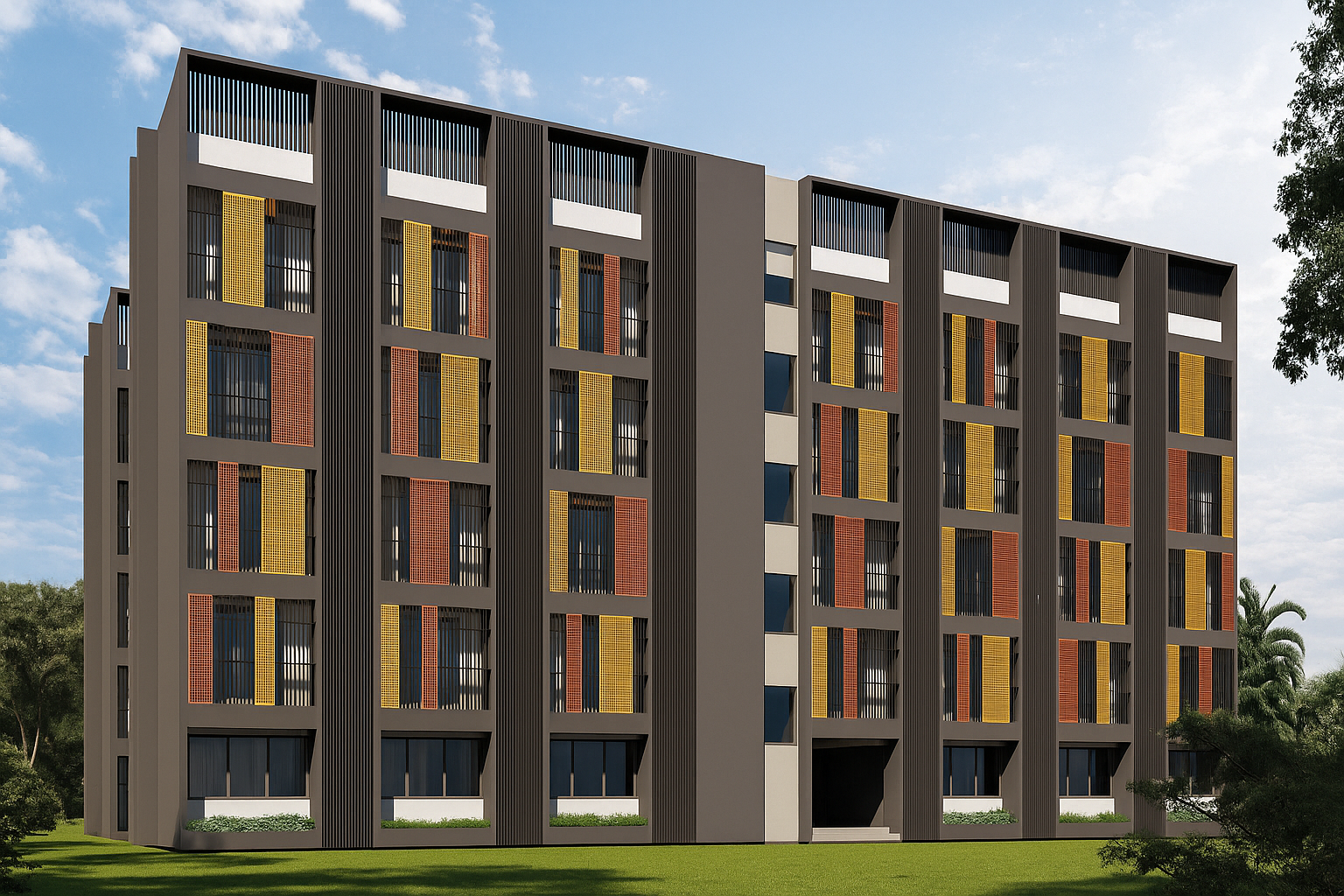Overview
In the heart of rural Bihar, a powerful transformation is taking place , one that celebrates art, community, and cultural inclusion. The Rural Bihar Amphitheatre, developed by BuiltX in collaboration with Akhand Jyoti Eye Hospital (AJEH), is more than just a performance space. It’s a symbol of what’s possible when infrastructure meets impact.
The genesis of the amphitheatre project was rooted in a profound idea: to build a venue that brings the community together, celebrates local talent, and provides a platform for cultural and educational events. For AJEH, an organization renowned for its commitment to eradicating curable blindness in rural India, this project represented an opportunity to extend their impact beyond healthcare, contributing to the social and cultural fabric of the region.
As we embarked on this journey, we faced numerous challenges, from designing a structure that could withstand the elements to ensuring accessibility for all community members. However, our unwavering commitment to sustainability, innovation, and community engagement guided us through each obstacle, resulting in a project that not only meets but exceeds the expectations of our clients and stakeholders.

The Project Owner
Akhand Jyoti Eye Hospital (AJEH) is a non-profit organization dedicated to eliminating curable blindness in Bihar by 2026. Their approach combines affordable and high-quality eye care services with deep community outreach.
- 80% of their surgeries are free of cost
- Focus on low-income, rural populations
- Strong emphasis on women empowerment and leadership in healthcare
- Operates under the Yugrishi Shriram Sharma Acharya Charitable Trust
The amphitheatre project is a reflection of their broader mission — extending healing not just to the eyes, but to the hearts and souls of the community.

Planning and Design
1. Design Concept: Inspired by traditional Indian amphitheatre, the design aimed to blend modern functionality with cultural heritage. The open-air design encourages natural ventilation and integrates seamlessly with the surrounding landscape.
2. Challenges in Design: Major challenges included designing a structure to withstand harsh weather conditions and ensuring accessibility for all community members. Solutions included using durable materials and incorporating ramps and handrails.
3. Architectural Features: Key features include a circular stage, tiered seating for optimal viewing, and the use of locally sourced materials. The design also incorporates natural elements, such as a landscaped garden surrounding the amphitheatre and a fountain in front of it.

Construction Timeline
Construction began on 20th July, 2023 and was completed on 30th November 2023. Key milestones included the groundbreaking ceremony, the completion of the foundation, and the final stage construction.
Outcomes and Impact
1. Deliverables: The project delivered a fully functional open-air amphitheatre with state-of-the-art lighting systems, ready to host various events.
2. Community Impact: The Amphitheatre has become a vibrant hub for cultural and educational activities, strengthening community bonds and fostering local talent.

Lesson Learned
1. Success: Effective stakeholder engagement and the use of sustainable materials were significant successes. The project’s ability to adapt to local conditions and resource availability was a key learning point.
2. Challenges: Addressing logistical issues and ensuring timely delivery of materials required improvement. Future projects should incorporate more extensive pre-construction planning and contingency measures.
3. Future Recommendation: More extensive pre-construction planning and contingency measures should be implemented to address potential delays and resource shortages.
Conclusion
1. Summary: The Rural Bihar Amphitheater project successfully created a vibrant cultural hub, demonstrating BuiltX’s commitment to community-focused, sustainable design.
2. Future Implications: The success of this project paves the way for similar community-oriented projects, highlighting the importance of integrating cultural and recreational facilities in rural development.
Acknowledgements: Special thanks to the project team, AJEH, local labor, and community members for their invaluable contributions.

What Our Client Say About us
Project photo Gallery
.avif)
.avif)
.avif)





